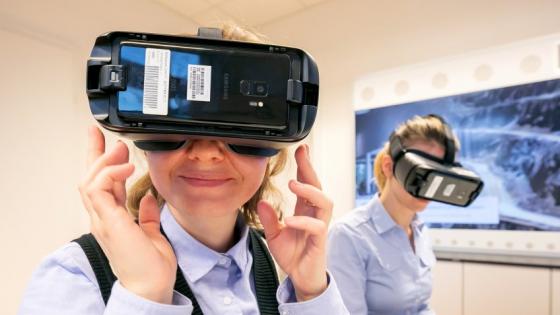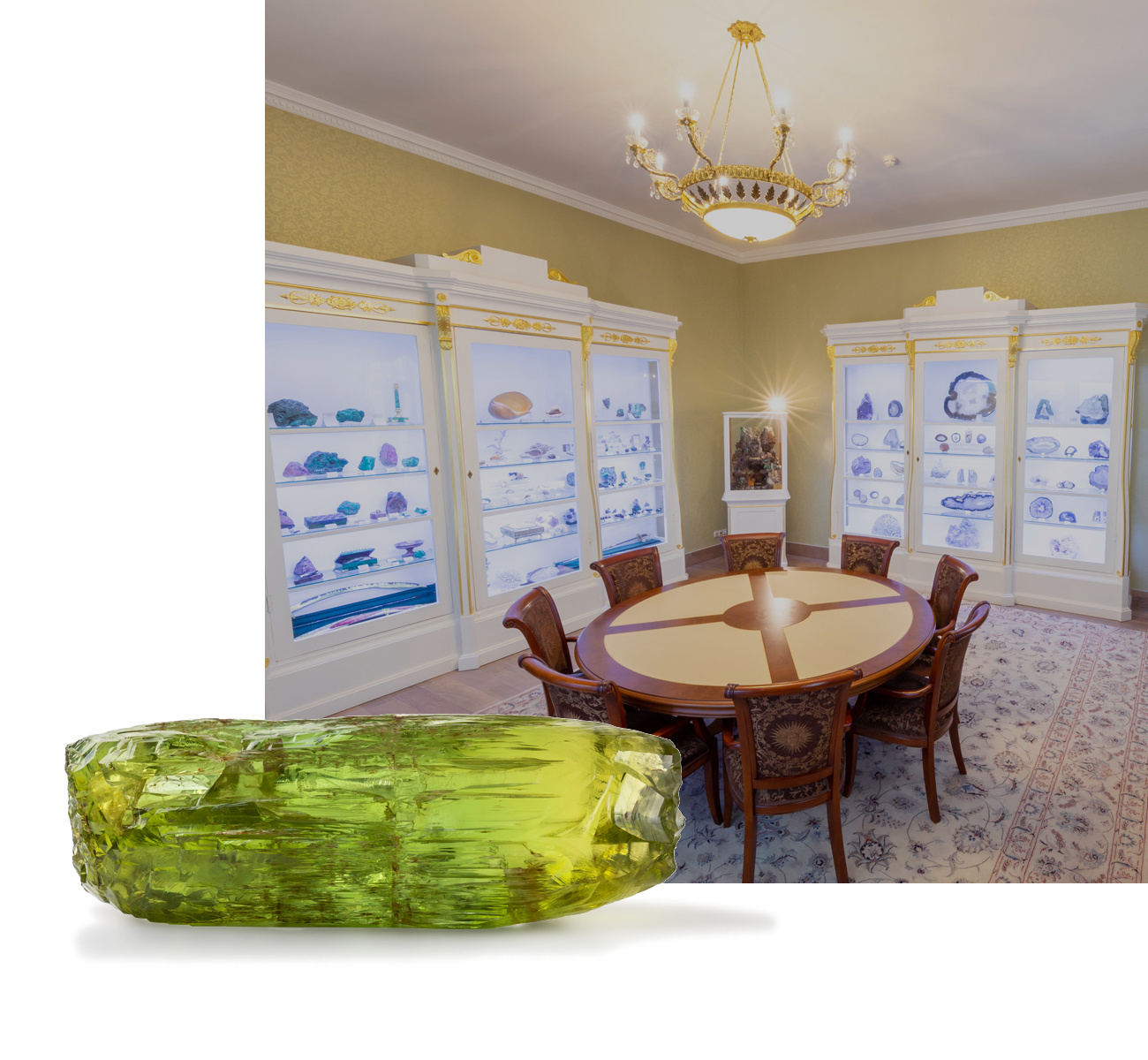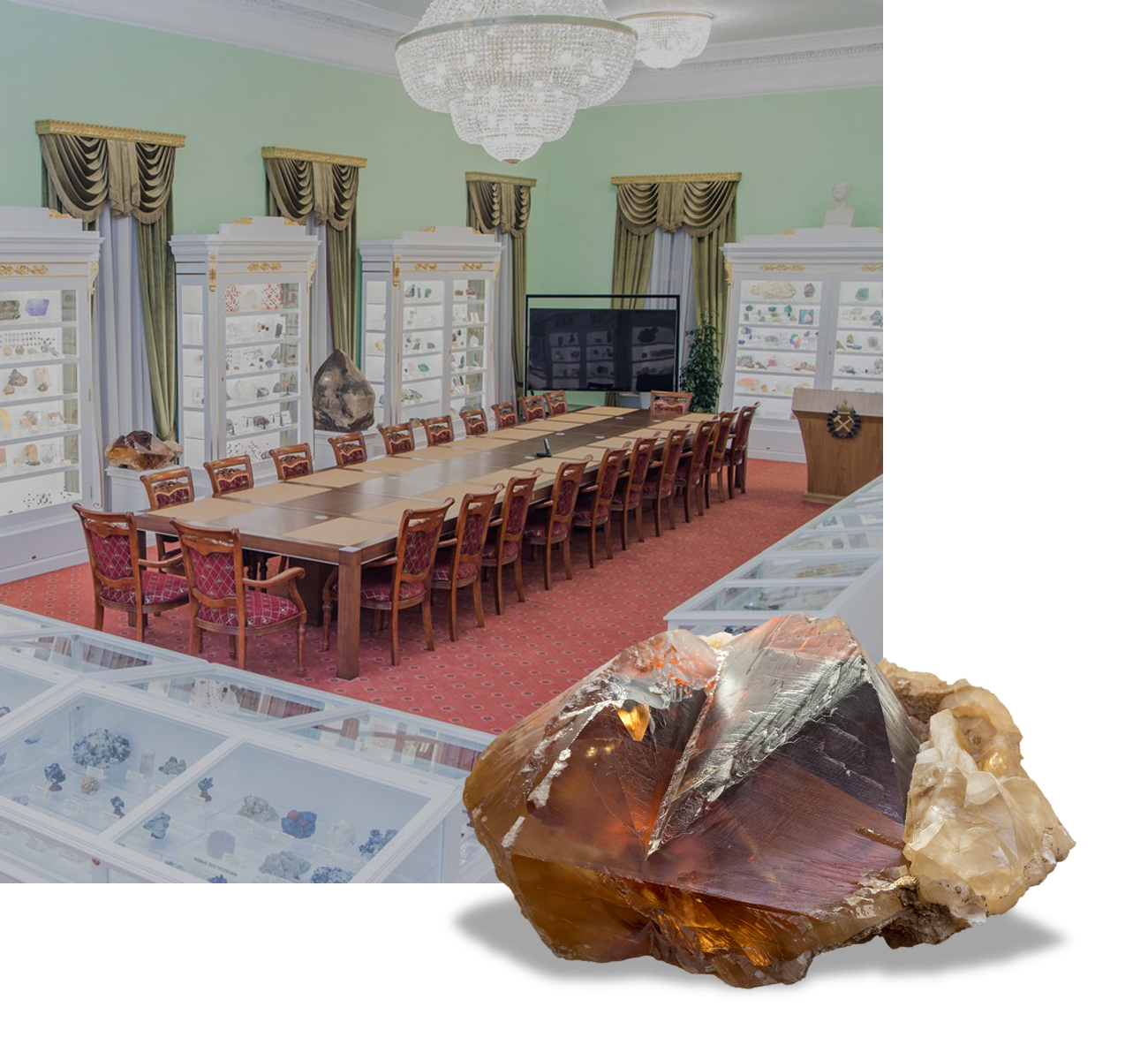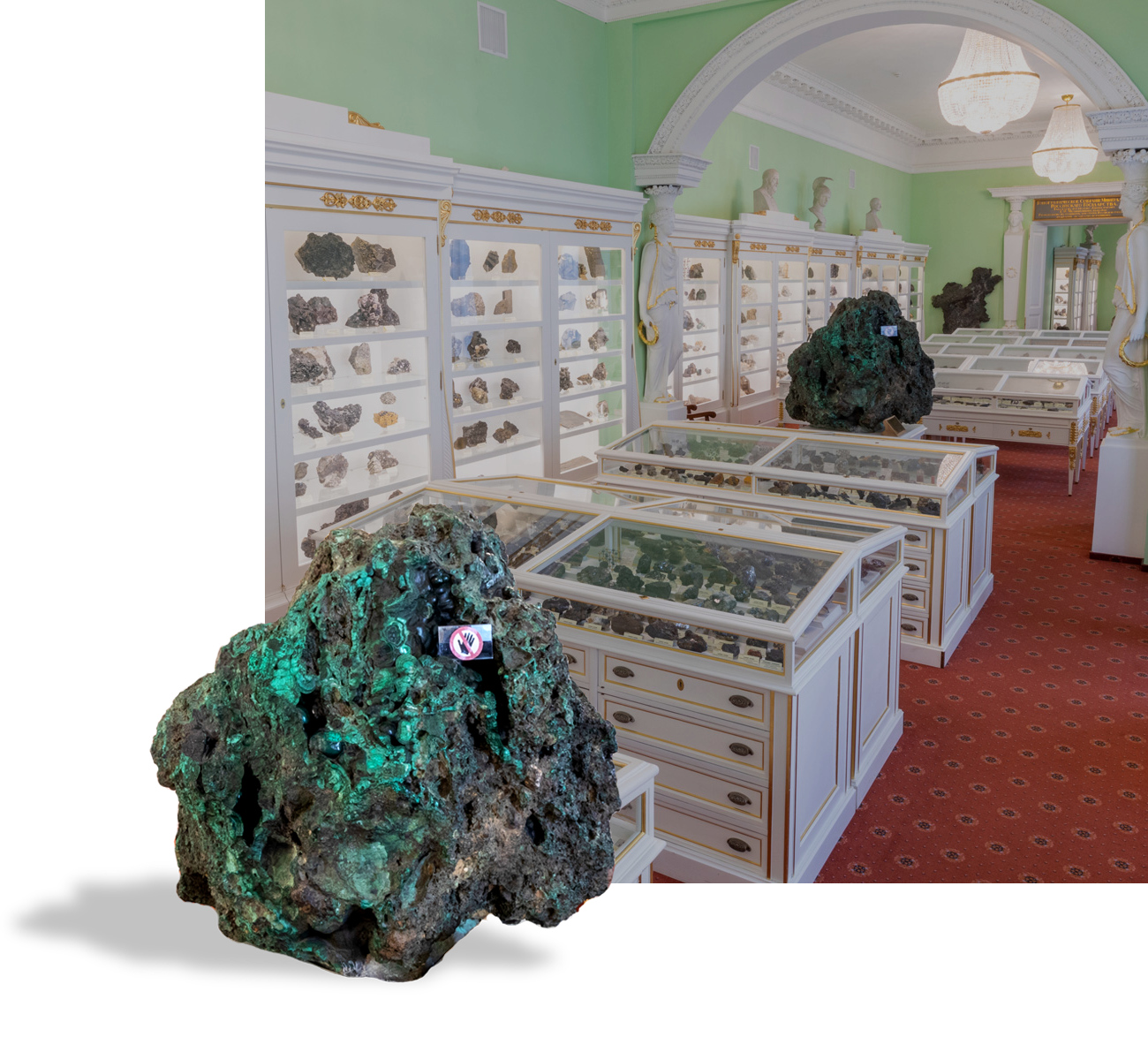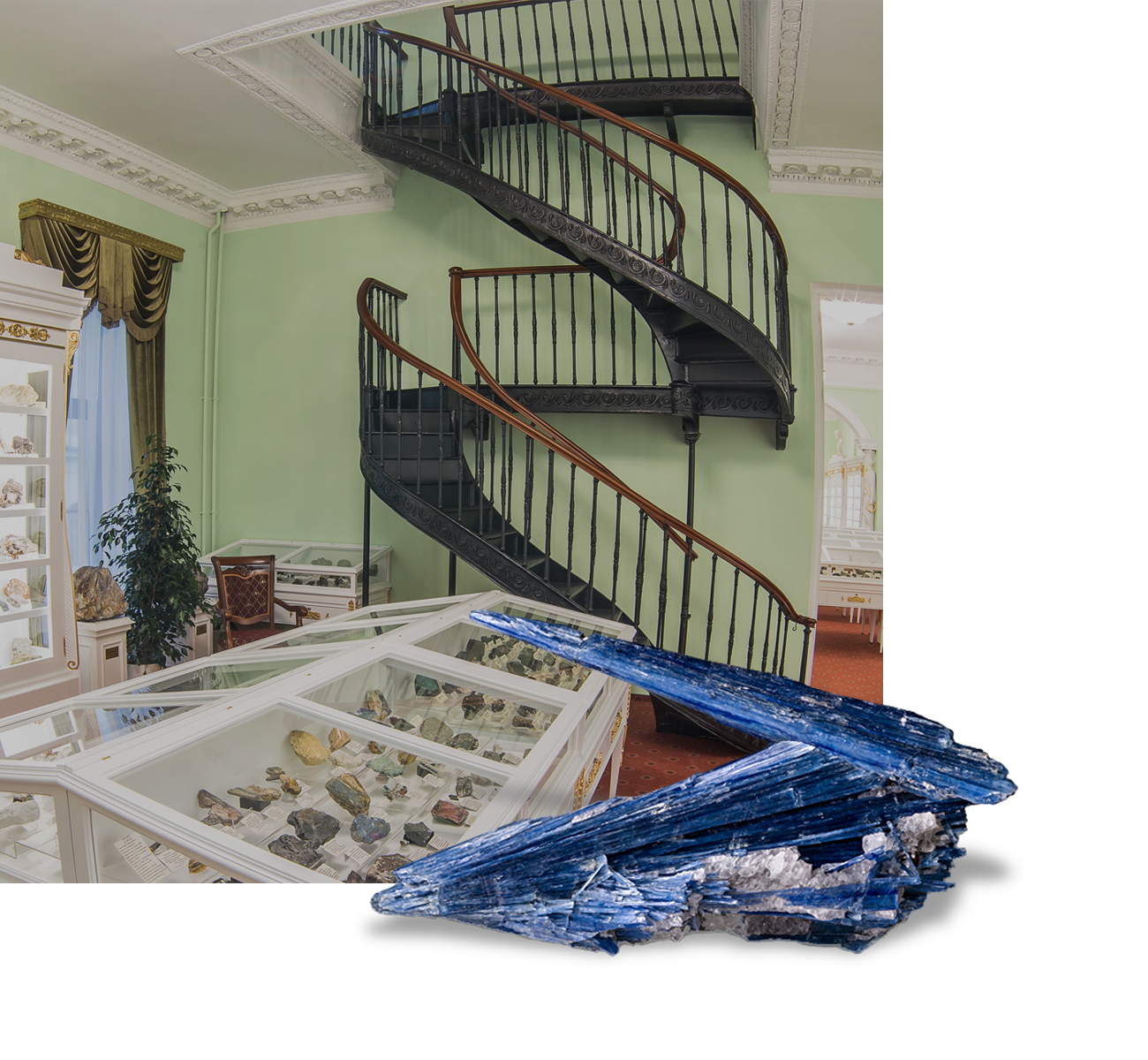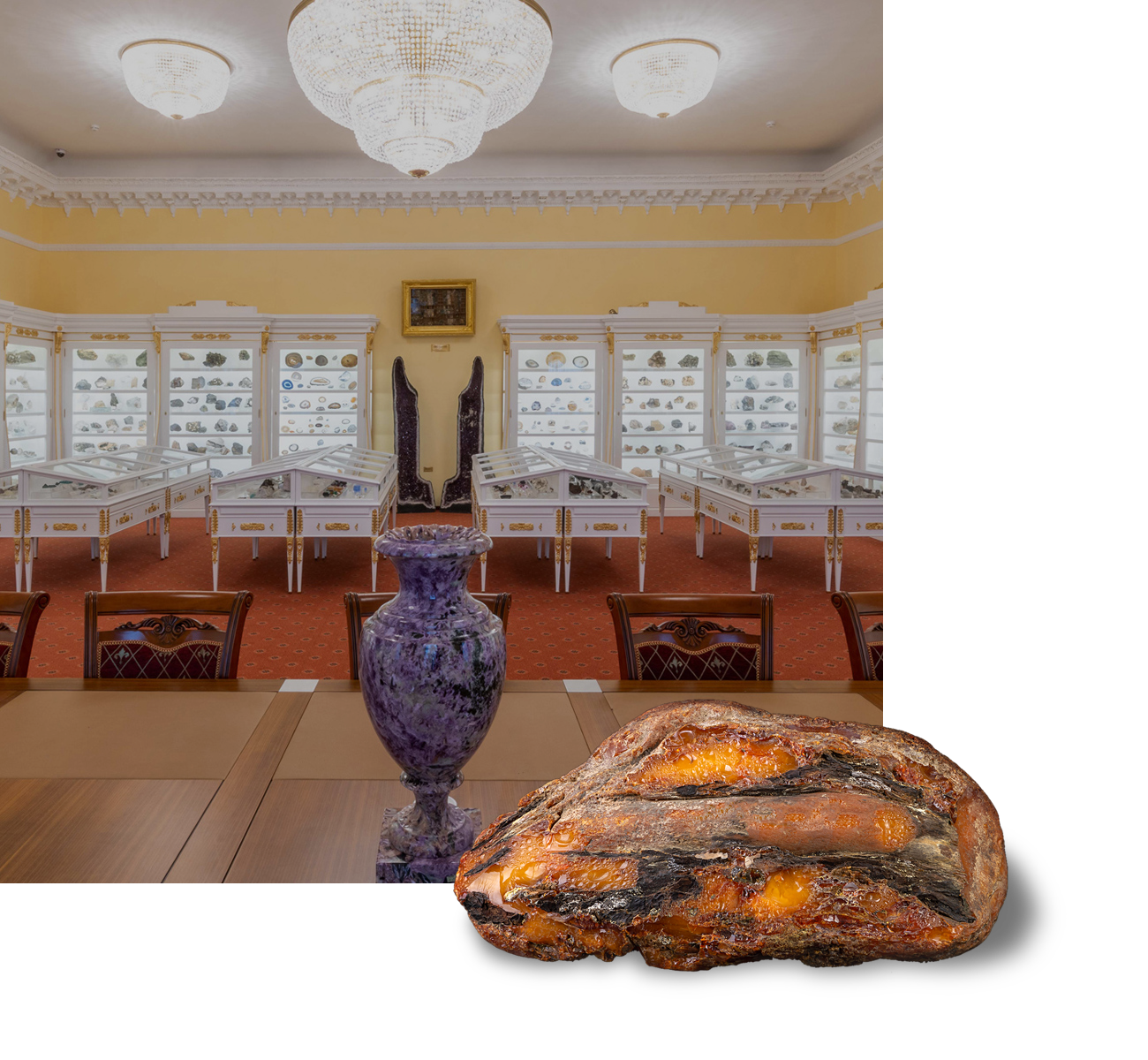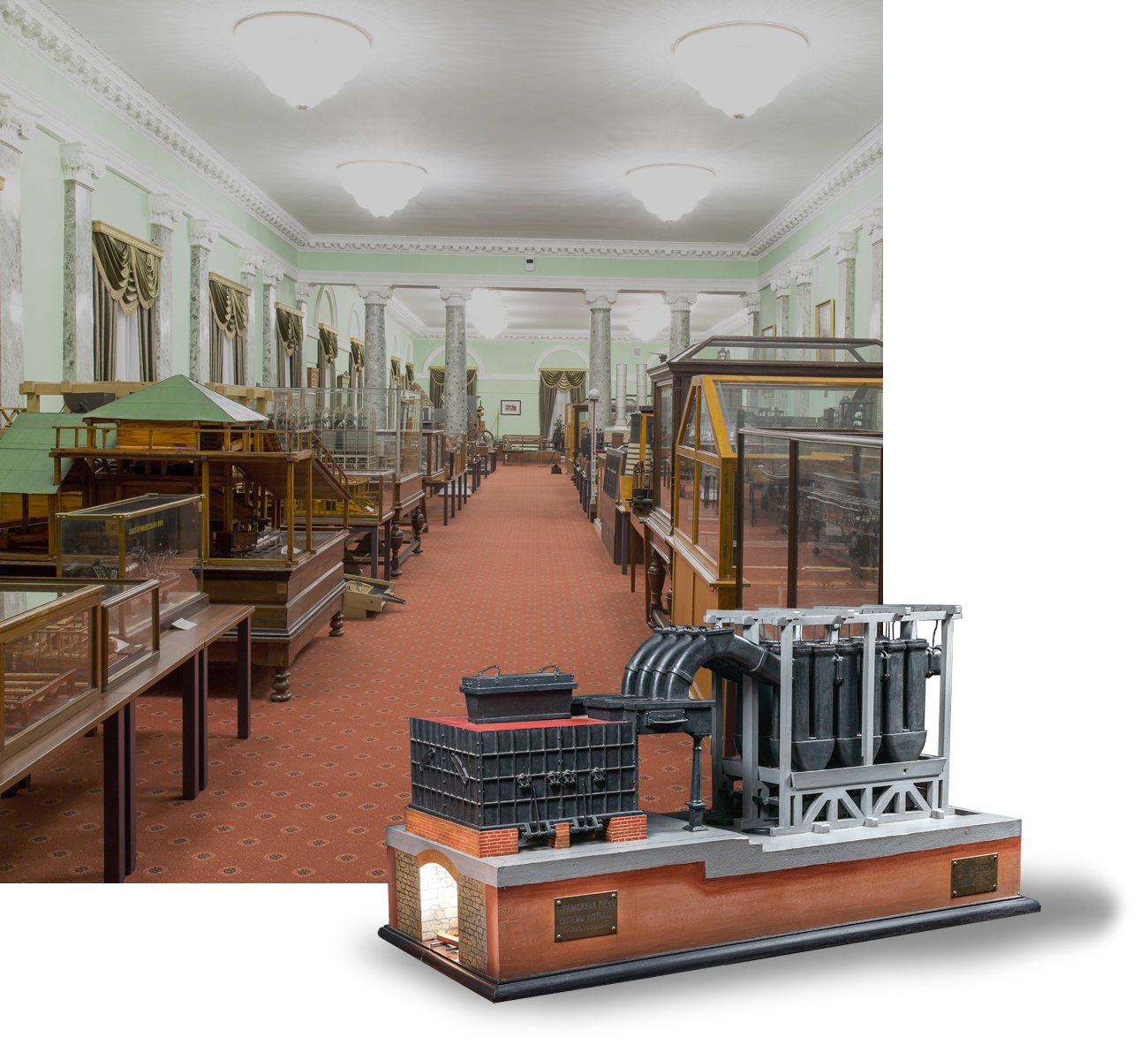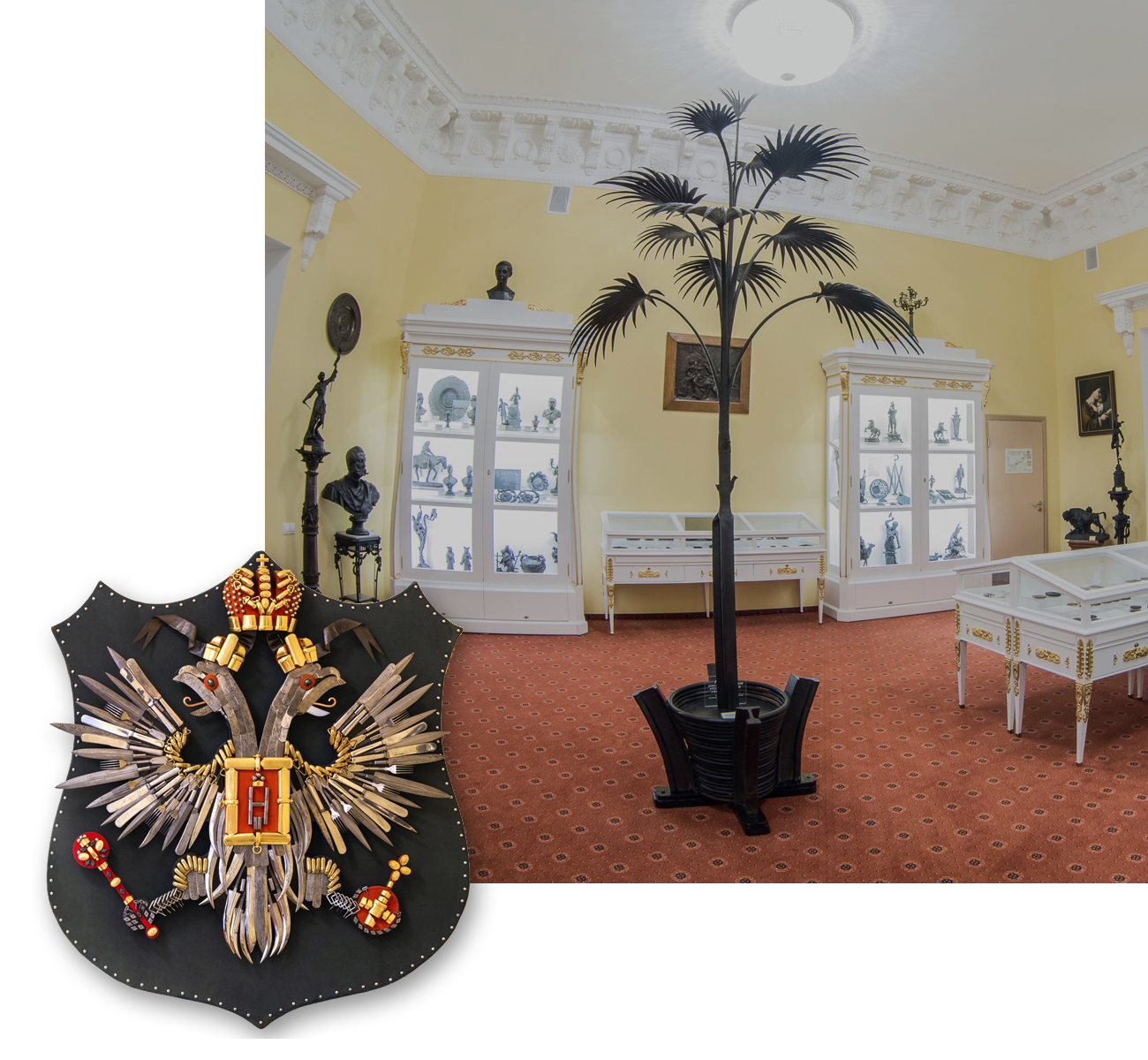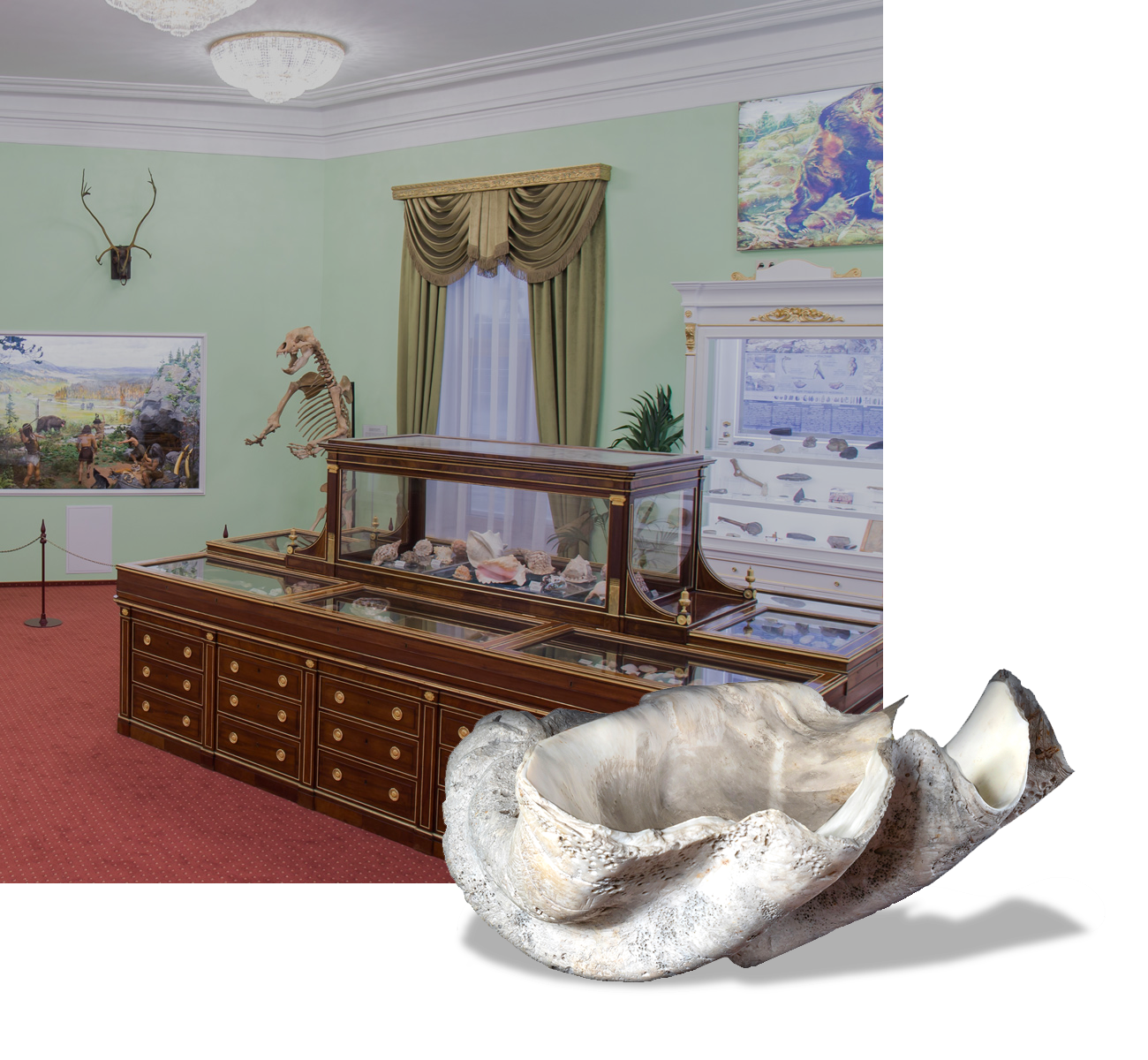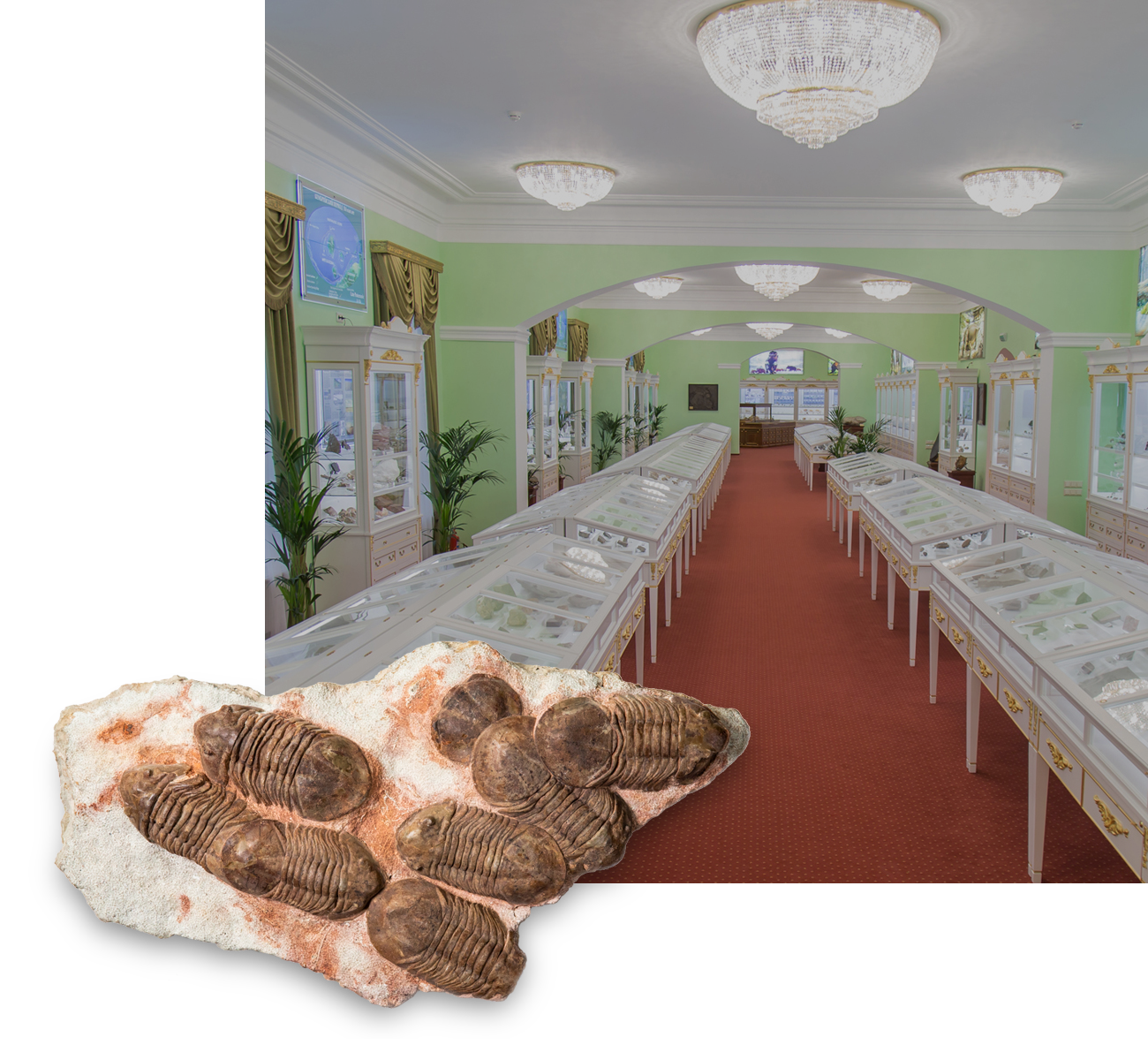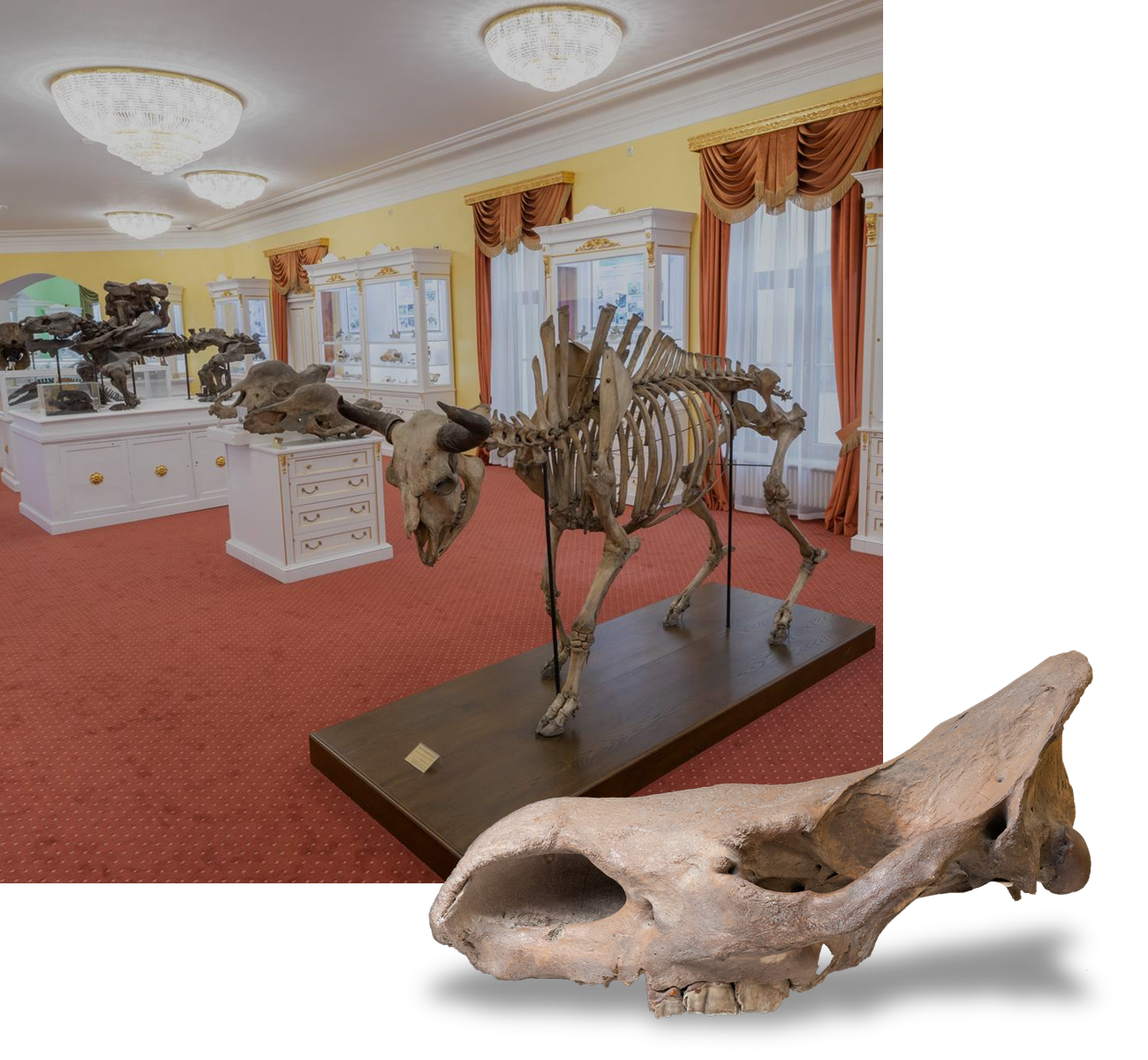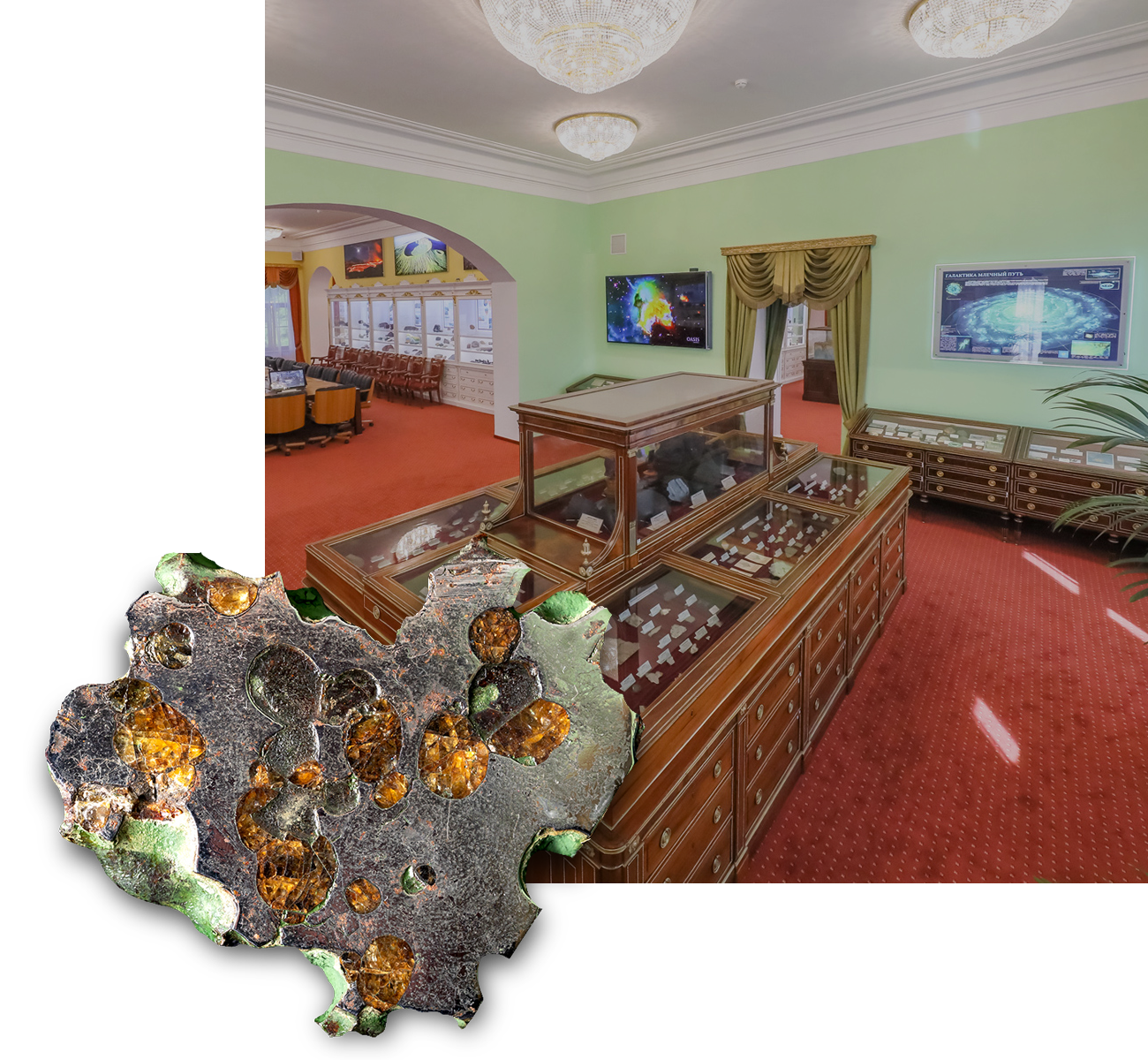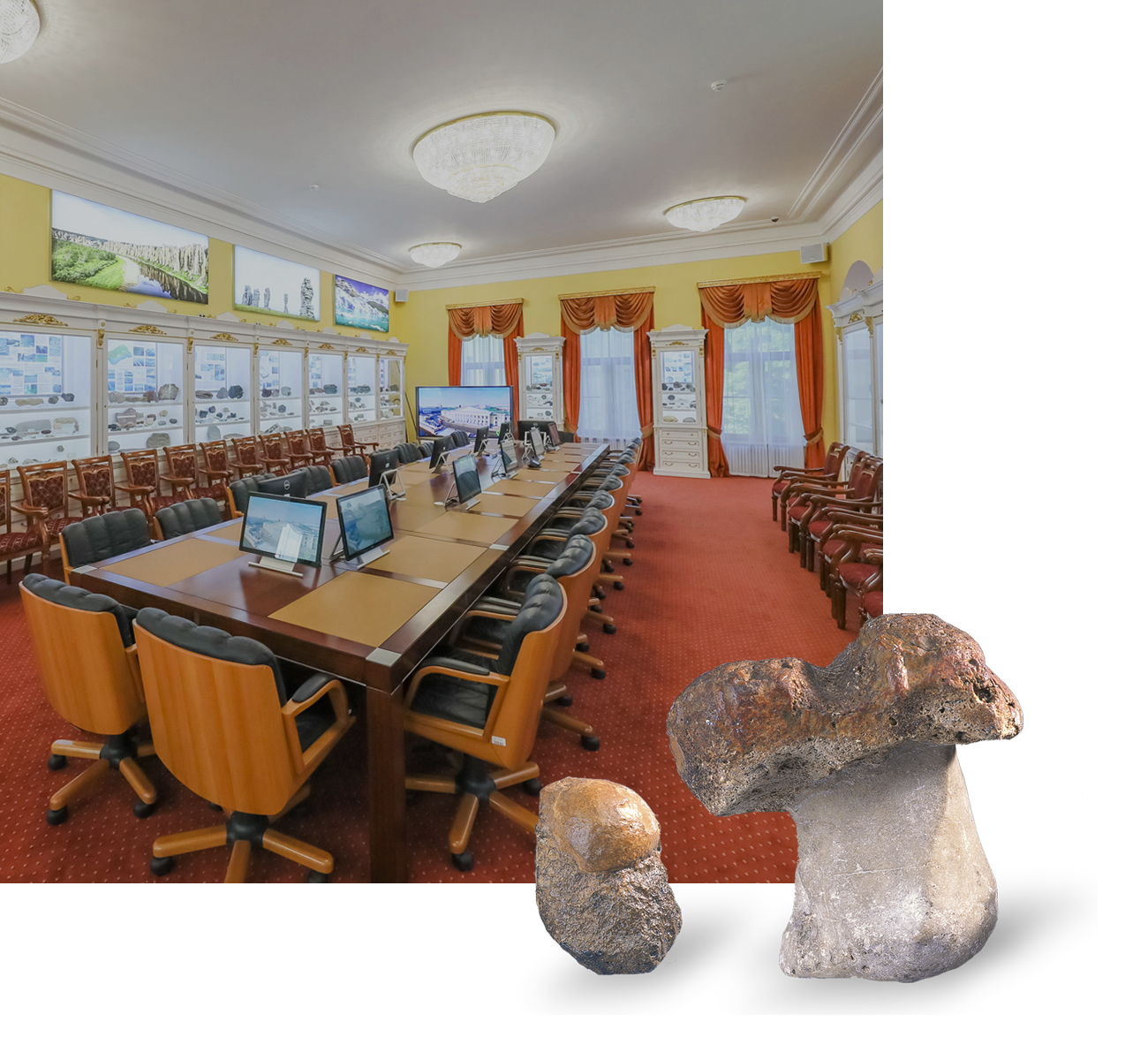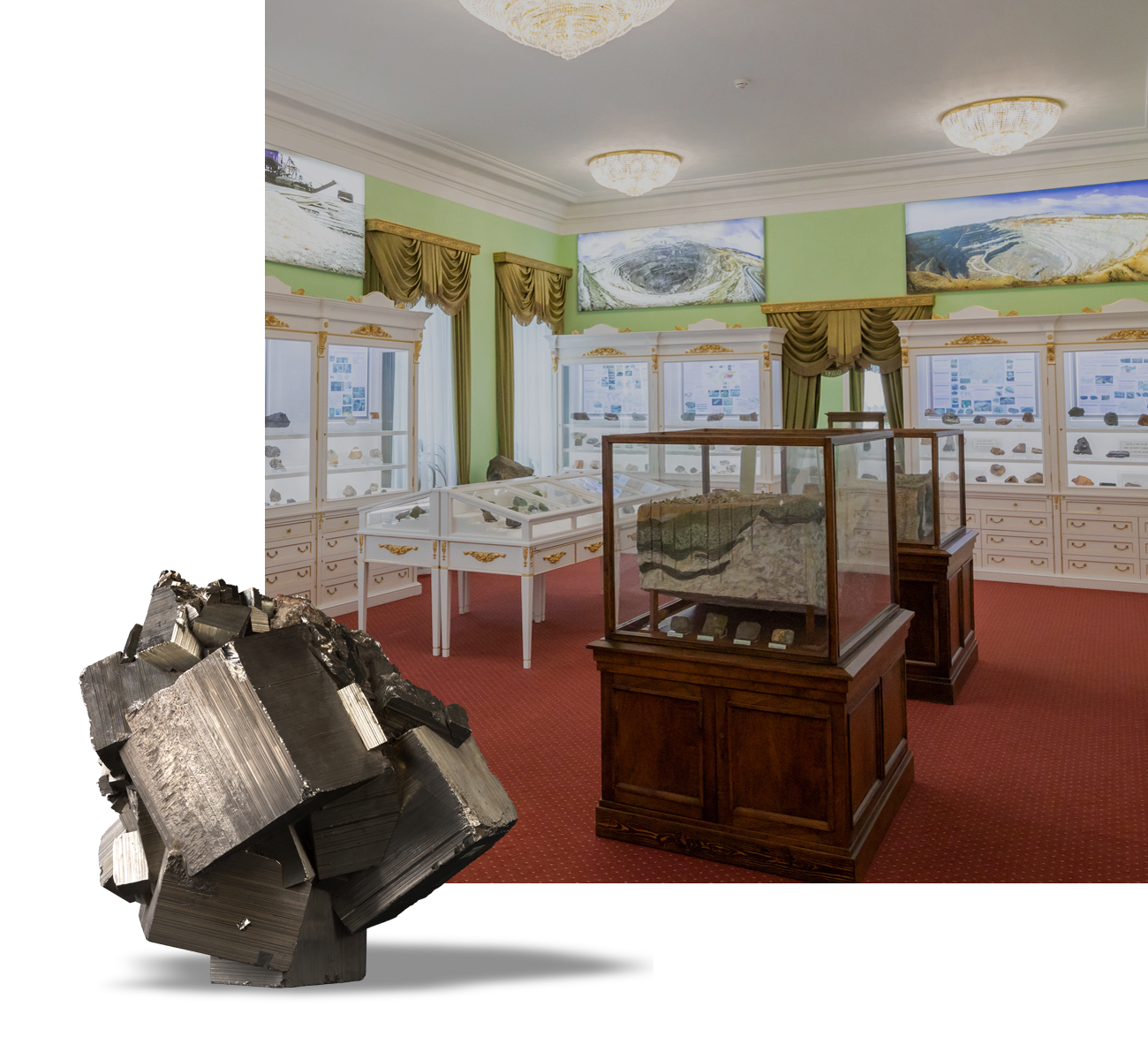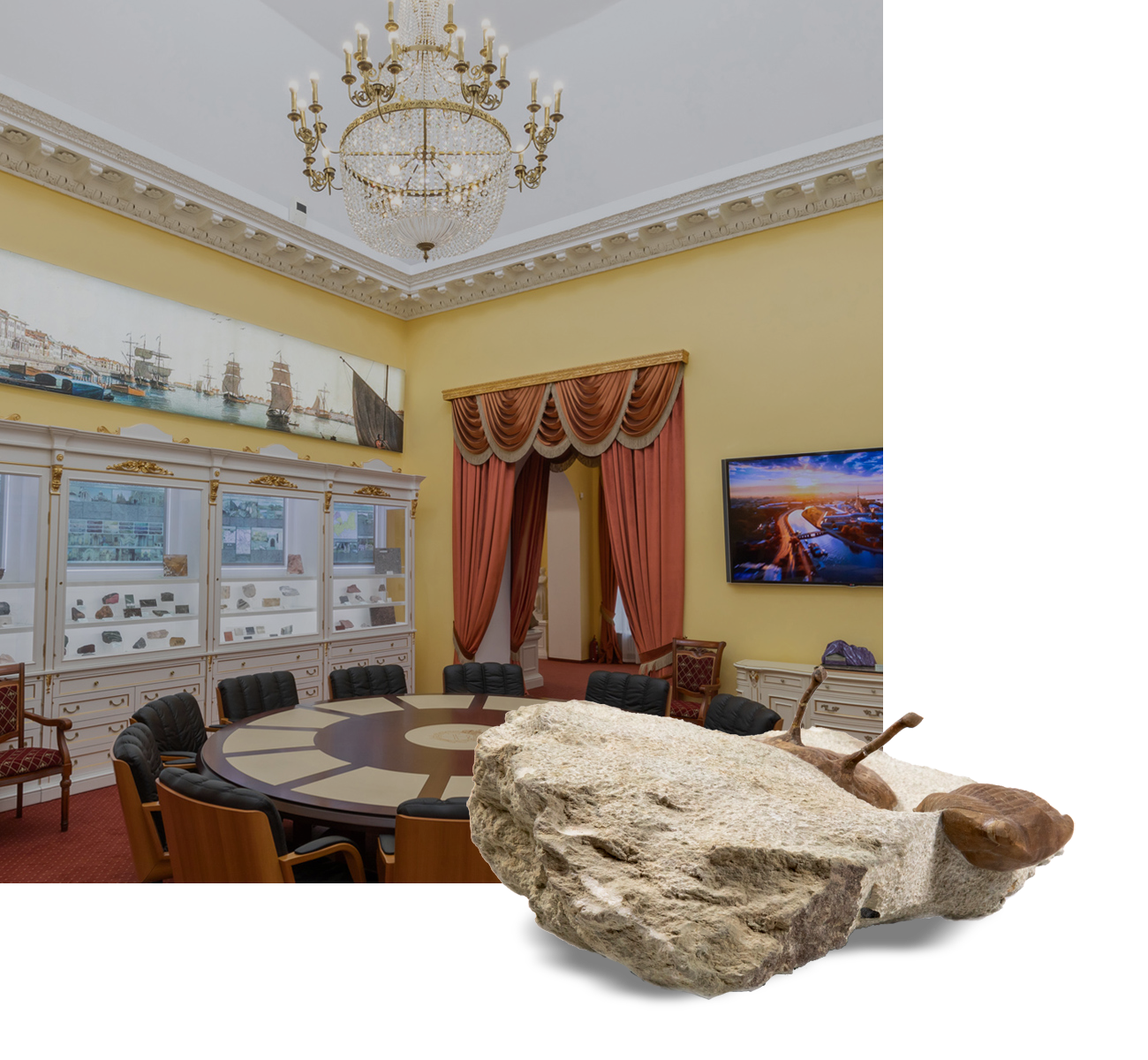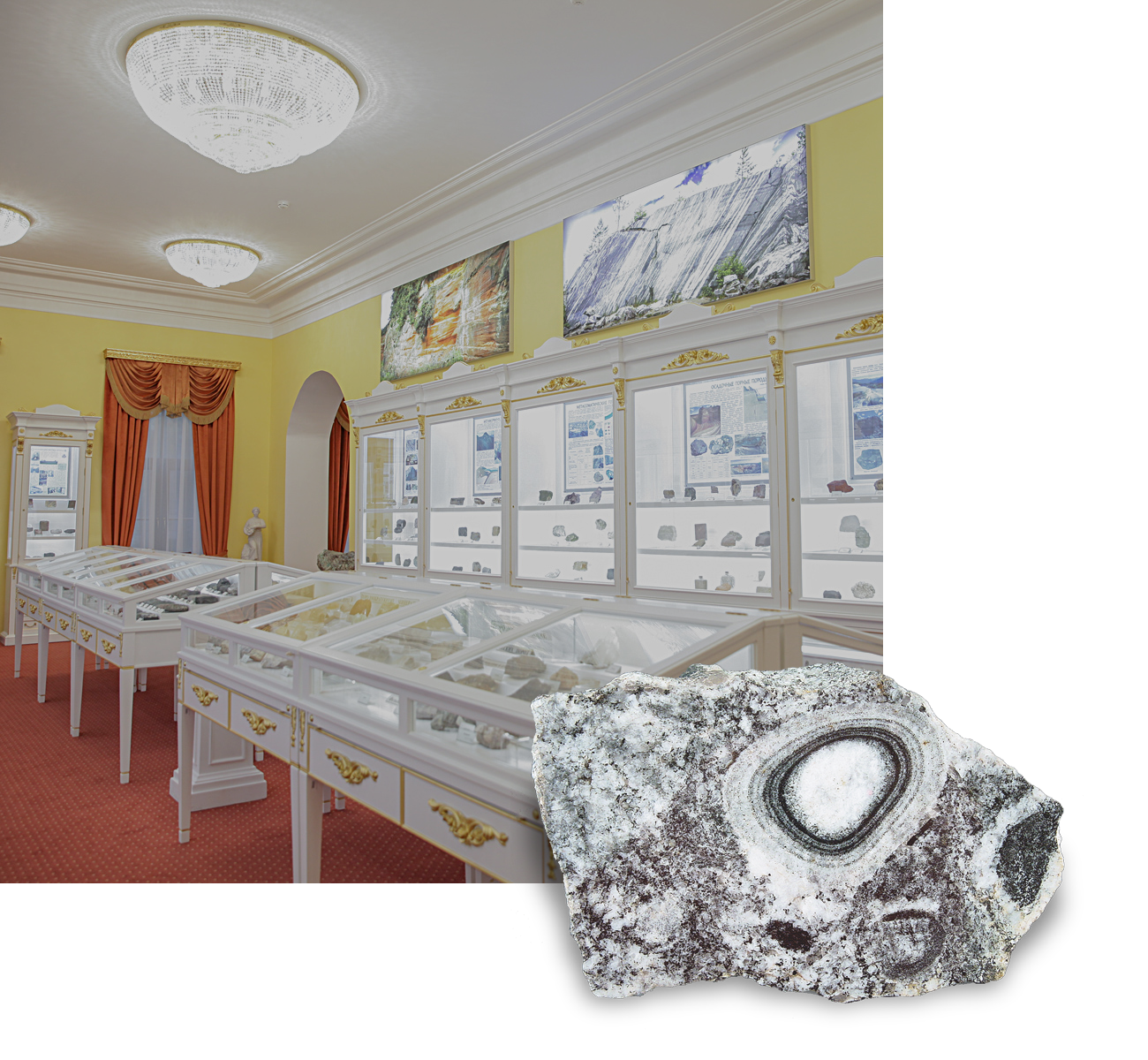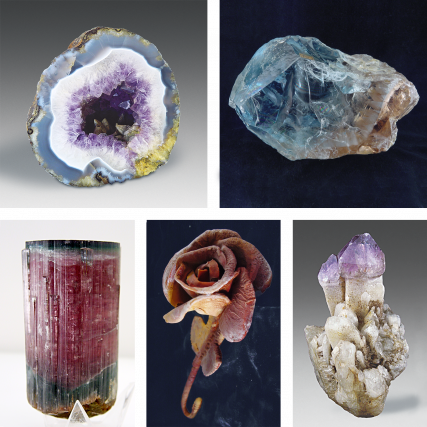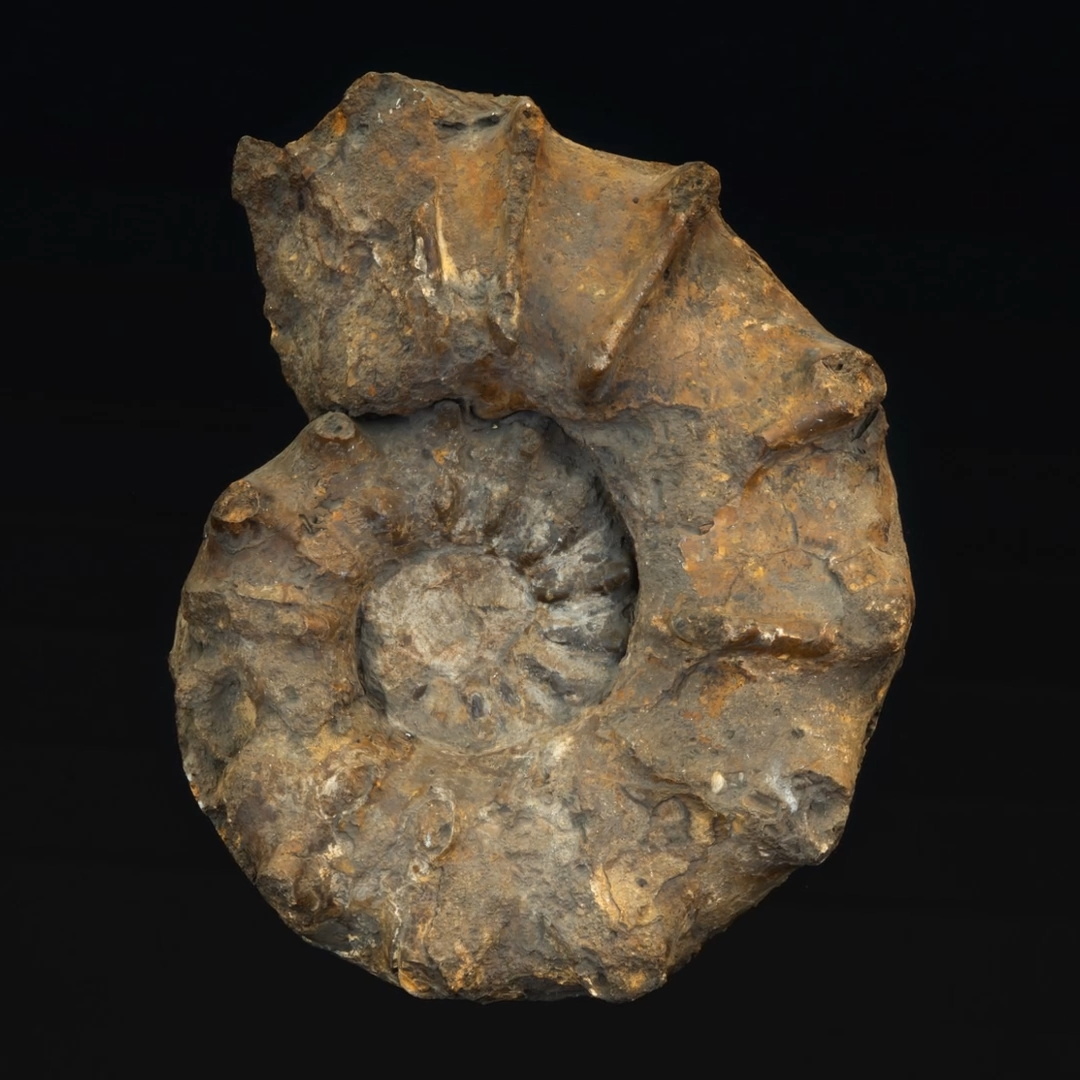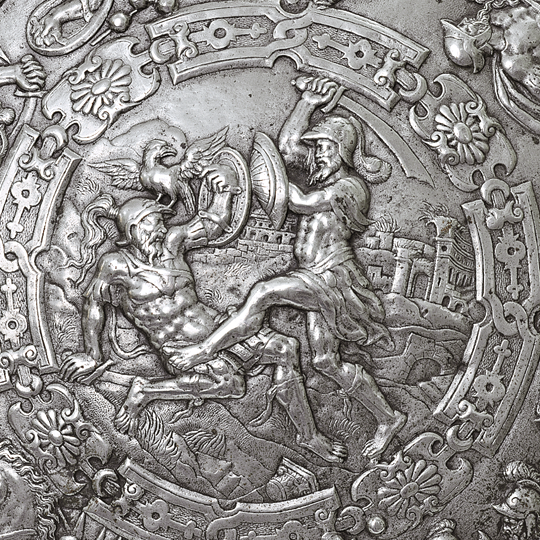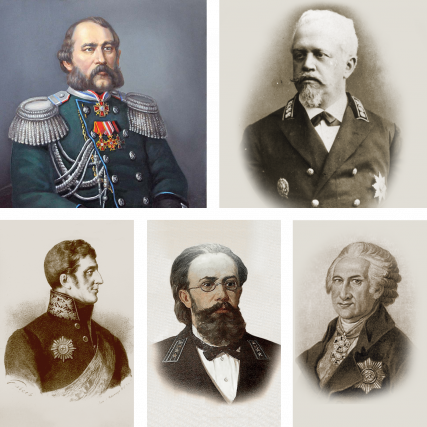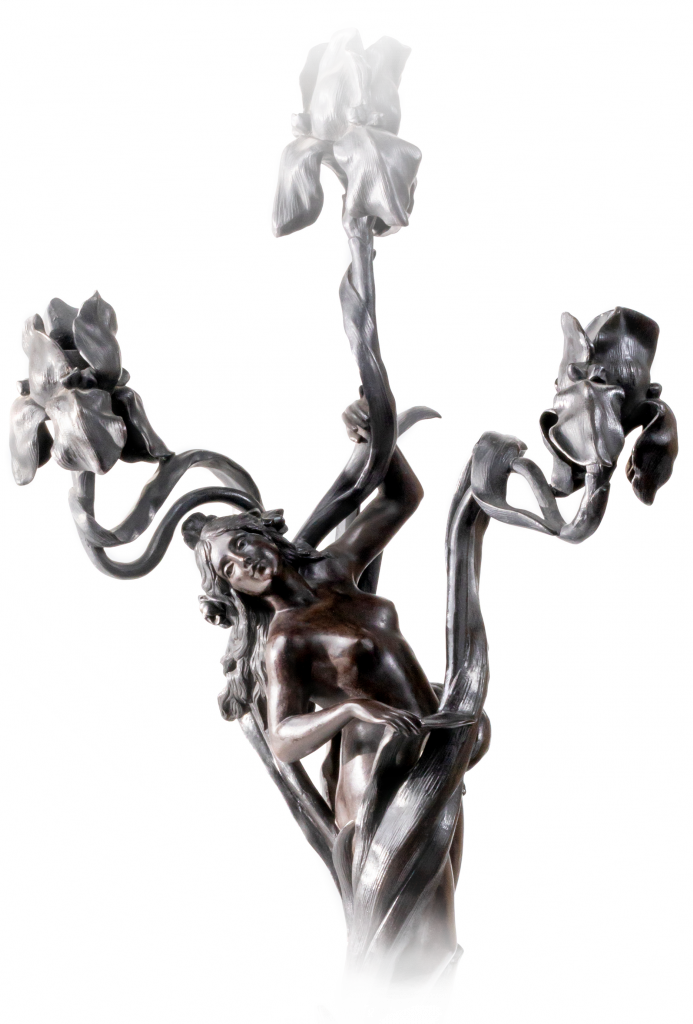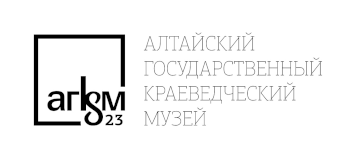HALL II «GENERAL MINERALOGY HALL»
Acquaintance with the mineralogical collection of the Mining Museum starts at the General Mineralogy Hall. The Hall's exposition was conceived and is still in use in the learning process as an introduction to mineralogy demonstrating the basic concepts of science.
The properties of minerals, peculiarities of their structure, the processes of nucleation, growth, changes in mineral individuals and aggregates - it all can be seen here. The following phenomena may be observed: dissolution, regeneration, deformation, twinning, the formation of pseudomorphisms, etc.
The Main Collection of Minerals contains more than 2,200 mineral types, about 55 thousand samples. Minerals are arranged according to their crystal-chemical classification. The collection geographically covers deposits located in almost all countries of the world.
An excellent guide to crystallography is the collection of natural crystals of 1250 specimens. That includes a unique quartz crystal weighing 500 kg from the Murzinka deposit (Ural), which was transferred to the Mining Museum from the State Cabinet in 1822.
